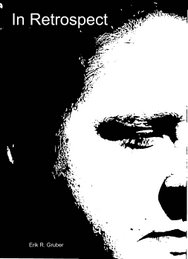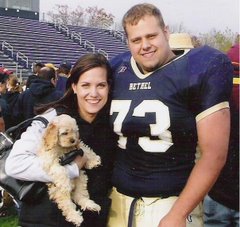On Friday I started looking at the activities of countries in the Middle East other than Iraq and Iran, beginning with Afghanistan and Israel. I’ll pick up where I left off, moving alphabetically through the region.
Jordan: The modern history of Jordan is heavily tied in with the histories of Palestine and Israel. When the UN partitioned Palestine and Israel into two separate states, 80% of the Palestinian land was east of the Jordan River. As a result, every time Palestine goes to war with Israel, Jordan is right there with them. Following the 1948 War of Independence Jordan annexed the West Bank (though this was only recognized by Great Britain). Jordan also signed a mutual defense pact with Egypt in 1967, thereby participating in the Six-Day War.
After Israel took control of the West Bank following the Six-Day war Jordan ended up with a Palestinian refugee population one million strong and growing, resulting in the growing prominence in size and power of Palestinian resistance elements (known as “fedayeen”) in Jordan. Jordan at the time was a long-standing monarchy, ruled by the Hashemite family, and the Palestinian groups were seen as a threat to its sovereignty. In June of 1970 fighting erupted, and many members of the Palestinian Liberation Organization (PLO) were expelled from Jordan in what became know as Black September.
Various Arab governments became involved to try and resolve the fighting, to little avail. The PLO continued their actions in Jordan, and the government was forced to respond with heavy fighting. The Syrians, backing the PLO, sent a tank force to invade northern Jordan, but retreated quickly. Interestingly, it is rumored that the Jordanian government asked for help from Israel (whom they had attacked numerous times). Israel responded by threatening to invade Jordan itself if Syria intervened.
Sporadic fighting continued until 1971, when Jordanian forces (backed by Iraq, who was interested because it had bases in Jordan) won a decisive victory and expelled the PLO from Jordan.
In the years following Jordan has been a relatively peaceful country. They didn’t participate in the Gulf War and have negotiated an end to hostilities with Israel.
Lebanon: Lebanon was a part of the Ottoman Empire for over 400 years, until the end of WWI (and the fall of the Ottomans), when it became a part of the French Mandate of Syria. It gained its independence in 1943 while France was occupied by Germany.
In these formative years Lebanon’s citizens were both Christian (majority) and Muslim, and enjoyed economic prosperity and relative peace. They joined their Arab neighbors in the 1948 war against Israel. Following this war approximately 100,000 Palestinian refugees fled Lebanon, and then the Lebanon-Israeli border was closed until after the 1967 Six-Day War.
When Lebanon first gained its independence, under the Christian majority, the constitution guaranteed Christian control of the government. Starting in the ‘60s this came under increasing fire from Muslim and left wing secular groups, which formed the Lebanese National Movement (LNM). In 1969 the LNM called for a new census to be taken (the previous one was in 1932) and to develop a new governmental structure that would reflect the population. The Christian government saw this as a threat, the two sides were unable to come to an agreement, and they started forming militias.
This thing is complicated. Really complicated. I’m going to do my best to break it down, so stick with me. I’ll start by separating the different militia groups (there were 6).
The Christian Militias, drawing support from the majority Christian population and acquiring arms from Romania, Bulgaria, West Germany, Belgium and Israel, backed the government (under Christian control). The largest was the Kataeb (also known as the Phalange – stupid name for a militia), which established its stronghold in East Beirut, where most of the government buildings were located.
Shiite Militias were slow to form, but became quite powerful when they did. At first many Shiites were drawn to Palestinian movement, but became disillusioned by the Palestinians radicalism and secularism. In 1974 Musa Sadr established the Amal Movement. This movement had a moderate Islamic ideology that attracted the young urban poor. This militia grew rapidly and in the early ‘80s a hard-line faction broke away to fight Israel, forming the Hezbollah guerillas. Hezbollah, funded and trained by Iran, remains Lebanon’s most powerful militia.
Smaller Sunni militias were supported by Iraq and Libya, but nevertheless were weak in battle. Early on in the war they joined with the Palestinian Liberation Organization (PLO), which was controlled by Palestinian Sunnis.
A small sect known as the Druze, strategically located in central Lebanon, were in a precarious position due to a lack of natural allies. As a result they established ties with the Soviet Union at the outset of the war, Israel upon its invasion of Lebanon, and Syria when Israel withdrew,
There were a number of non-religious militias supporting communism, socialism, and assorted other governments.
The PLO relocated much of its strength to Lebanon after being expelled from Jordan (see Jordan post). The PLO was plagued by internal strife that its leader, Yassir Arafat, could not rein in. Arafat’s mainstream PLO, represented by the powerful Fatah guerillas, at first opted to stay out of Lebanon’s conflicts, but were eventually dragged in by radical PLO factions. In 1974 the PLO split when Arafat supported a two-state proposal with Israel. This split restricted organizational unity during the Lebanese Civil War, but the Fatah guerillas remain a powerful force in the country.
The war itself, lasting from 1975 to 1989, can be broken into four phases.
The first phase, lasting from 1975 to 1977, was marked by sectarian struggles and civilian massacres. This came to a climax in 1976, when Christian forces killed 1,000 people in the Karantina massacre. A Palestinian militia responded by killing hundreds in Damour. These massacres led to the migration of nearly all Christians and Muslims to areas under the control of their respective sects, essentially establishing East Beirut as Christian Beirut and West Beirut as Muslim Beirut.
Later that year Syria was asked to intervene. A cease fire was implemented, but this did nothing to stop the conflict. 40,000 Syrian troops entered Lebanon, and an uneasy calm followed. Lebanon was split, with both sides gathering strength.
The Christian militias consolidated power to form the Lebanese Front (LF) in opposition to the Muslim Lebanese National Movement (LNM).
In March of 1977 the leader of the LNM was assassinated, which some blame on the Syrian government. The LNM, which had consisted of Shiite militias, Sunni militias, the PLO, anti-government leftists, and the Druze, crumbled. A man named Hafez Al-Assad filled the void, splitting up both Christian and Muslim coalitions in a game of political intrigue.
The beginning of the second phase of the war, which lasted from 1977 to 1982, was marked by the Israeli invasion of Southern Lebanon in retaliation for Fatah forces crossing the border into Israel. Israel withdrew in 1978 after UN interventions, but maintained a 12 mile security zone along the border.
Israel became even more entangled when the Christian Phalange Militia began clashing with the Syrian government, making the Phalange and Israel de facto allies. In 1981 Israel prepared to attack with the intention of destroying the PLO and ensuring the presidency of Phalange leader Bashir Gemayel, who was then expected to sign a peace treaty with Israel and secure their northern border.
The U.S. then intervened, ordering a cease-fire between Lebanon and Israel. This presented a problem from the Israeli perspective. The PLO was located in positions surrounding Israel, so they could attack from countries outside of Lebanon and not violate the cease-fire. Israel, however, could not retaliate with a strike against the PLO in Lebanon and the PLO in other countries was so dispersed that it would be difficult to locate.
The third phase of the war, lasting from 1982-83, began with the assassination of an Israeli ambassador in London by the Abu Nidal Organization. It was difficult to tell which side the Abu Nidal Organization was on, as it had assassinated numerous PLO diplomats as well, but this was of little import to Israel, who ordered a strike against the PLO in West Beirut (a violation of the cease-fire).
In June of 1982 Israel invaded Lebanon. Initially the plan was described as an operation to destroy PLO strongholds along the border and create a larger safe zone, putting Israel out of reach of PLO rockets. It quickly became clear, however, that Israel had every intention of moving into Beirut. The UN created a resolution ordering their withdrawal, which the US vetoed, giving assent to the invasion. The fighting that ensued resulted in 6,700 deaths, 80% civilian.
A truce was eventually negotiated in which both the PLO and Israeli forces would pull out of Beirut, and a multinational force was sent to oversee this process. Israel, however, claimed that over 2,000 PLO militants were hiding in Palestinian refugee camps.
Under Israeli military control Phalange leader Bashir Gemayel was elected president in August. This election was unpopular with many Muslims, fearing his relationship with Israel, and he was assassinated in September. The Israeli government, blaming the PLO and still believing that a number of PLO militants were hiding out in Palestinian refugee camps, allowed 200 Phalange personnel to enter the camps in search of militants. Upwards of 3,000 Palestinians were massacred, none members of the PLO. This massacre made headlines, and calls were made for the international community to stabilize Lebanon. Bashir’s brother Amine was chosen to succeed him and a renewed focus on peace and the withdrawal of Israeli and Syrian troops was brought forth.
In May of 1983 an agreement was signed by Amine, the US and Israel that stated Israel would withdraw when Syrian forces did. Many Muslims saw this as an attempt by Israel to establish a permanent stronghold. Muslims started defecting from the newly formed Lebanese Army, rejoining militias, and fighting resumed.
During this period US interests started being attacked, including the US Embassy in West Beirut. The US retaliated, resulting in heavy civilian casualties. This period also saw the rise of the Hezbollah guerillas.
The fourth phase of the war, lasting from 1984-89, consisted of sectarian conflicts and heavy fighting. In the War of Camps (1985-86) the Syrian backed Amal Militia sought to drive the PLO out of their strongholds, resulting in heavy casualties. In 1987 a coalition of militias including Palestinians and Druze fighters allied against Amal. This is then the Hezbollah emerged, seizing command of several Amal held parts of Beirut. Meanwhile, Iraq got involved. Seeking to lessen the influence of the Iranian backed Hezbollah, Hussein supported Christian militias.
Fighting continued until 1991, when the Lebanese parliament passed an amnesty law pardoning political crimes, militias were disbanded (with the important exception of Hezbollah), and the Lebanese Armed Forces established itself as Lebanon’s major non-sectarian institution.
Lebanon has enjoyed relative peace ever since (albeit this peace is shaky, but peace nonetheless). Hezbollah and Fatah have both emerged as legitimate political groups, though Hezbollah is still a militia and maintains its own forces, which they claim is due to legitimate resistance against Israel (we all remember the little scuffle between the two this summer).
This was a long one. I’m exhausted, how about you? I hope now you know everything you wanted to know (and more) about Jordan and Lebanon.
Thanks for reading.
Subscribe to:
Post Comments (Atom)


















No comments:
Post a Comment